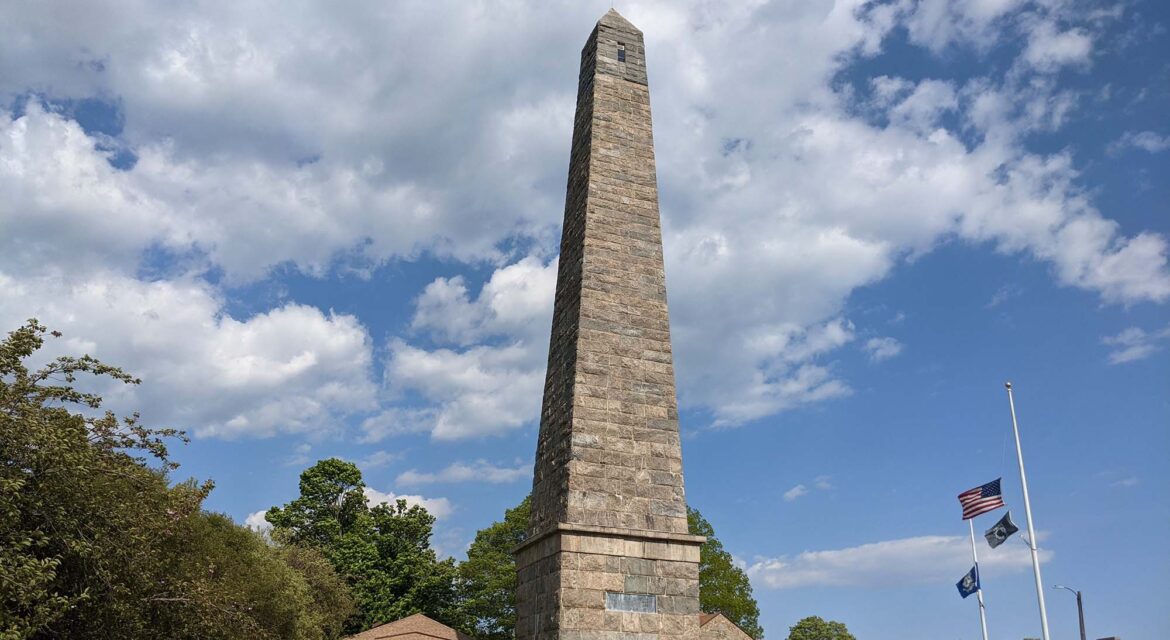 Dedicated to the Americans who fell during one of the last battles of the Revolutionary War, the Groton Monument has become an essential element of the city of Groton, Connecticut. The monument is visible from across the city but can also be seen in various aspects of the community, allowing it to celebrate the history of the area while also cultivating a legacy that will endure into the far future.
Dedicated to the Americans who fell during one of the last battles of the Revolutionary War, the Groton Monument has become an essential element of the city of Groton, Connecticut. The monument is visible from across the city but can also be seen in various aspects of the community, allowing it to celebrate the history of the area while also cultivating a legacy that will endure into the far future.

Commemorating the Battle of Groton Heights
 The Battle of Groton Heights was fought on September 6, 1781, during the American Revolutionary War. Sometimes called the Fort Griswold Massacre, the battle was the result of an attempt by Benedict Arnold to capture military supplies at Fort Griswold. Led by Colonel William Ledyard, a group of about 150 American privateers defended the fort against over 800 British troops. They were eventually overwhelmed, which led to a massacre of the Americans following their surrender. Reports conflict around the timing and terms of that surrender, during which Colonel Ledyard was killed by the British with his own sword.
The Battle of Groton Heights was fought on September 6, 1781, during the American Revolutionary War. Sometimes called the Fort Griswold Massacre, the battle was the result of an attempt by Benedict Arnold to capture military supplies at Fort Griswold. Led by Colonel William Ledyard, a group of about 150 American privateers defended the fort against over 800 British troops. They were eventually overwhelmed, which led to a massacre of the Americans following their surrender. Reports conflict around the timing and terms of that surrender, during which Colonel Ledyard was killed by the British with his own sword.
The most prominent aspect of the site is the Groton Monument. Built between 1826 and 1830, it is the oldest monument of its kind in America. Constructed of granite, it was dedicated to the men who had defended Fort Griswold during the battle. The summit is reached by climbing 166 steps, with each of those steps representing a man who fought in the battle. In the centennial year of 1881, the top was enclosed to increase the monument to a height of 135 feet.
The nearby Monument House Museum was built in 1830 as the monument caretaker’s residence. Today it features objects from the battle and other artifacts from the colonial period. The history and experiences on display in these spots and all throughout the site have enabled the monument itself to make a notable impact on the surrounding community that has been extended across the entire country.

Cultivating a Legacy
 Used in various logos and by the city of Groton itself, the Groton Monument has become a recognizable icon on multiple levels. As the most prominent aspect of the site, the granite obelisk appears in many of these materials, but it is far from the only landmark on the site that has allowed it to cultivate a legacy.
Used in various logos and by the city of Groton itself, the Groton Monument has become a recognizable icon on multiple levels. As the most prominent aspect of the site, the granite obelisk appears in many of these materials, but it is far from the only landmark on the site that has allowed it to cultivate a legacy.
A marble plaque lists the names of those who fell defending Fort Griswold. The site also includes the restored earthwork battery, cannons, and a later period shot furnace and powder magazine. The Colonel Ledyard Monument and the remains of the Barracks Building are additional notable landmarks on the site.
Visitors can climb the monument and visit the museum from Memorial Day through Labor Day. Reenactments of the battle are also held at the site, all of which have provided audiences with a sense of connect to the history and legacy that the Groton Monument represents.
Established as a park in 1953, the site is now a Connecticut State Park, which has further connected the site and monument to the modern community. In doing so, it has been embraced by audiences of all types to influence the creation of other monuments all over the country and across multiple eras.

Influencing Monuments Across America
 Preceding both the Bunker Hill Monument and the Washington Monument, the legacy that the Groton Monument represents can be clearly seen in the shape and form of these other notable monuments. The effort to create a monument that would commemorate a piece of history has helped shape some of the most famous monuments in the country, all while becoming an icon for a community that continues to create a positive impact for stakeholders in the present.
Preceding both the Bunker Hill Monument and the Washington Monument, the legacy that the Groton Monument represents can be clearly seen in the shape and form of these other notable monuments. The effort to create a monument that would commemorate a piece of history has helped shape some of the most famous monuments in the country, all while becoming an icon for a community that continues to create a positive impact for stakeholders in the present.

